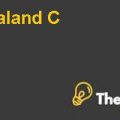
INTRODUCTION
Philips
Gerard and his father started a small factory to produce light bulbs in Eindhoven, Holland in 1892 and later on Gerard’s brother was also hired to assure the success of their family business. However, eight years of restless efforts resulted in emergence of worlds’ third largest light-bulb manufacture in Europe.
That was the era when diversification was thought to be a key success factor but Gerard decided to focus on its core product and introduced innovation with the help of his skills in technology industry. It was Philips’s strategy to keep up to date with rapidly changing technology, furthermore, its research and development led it to the leading position and new innovations in light-bulb industry out classed its competitors. Moreover, in order to grow the business in 1899, Gerard decided to target the international market by establishing its sale organizations in its target markets and by starting to export its products while production was still done at central location from Eindhoven. Meanwhile, it identified General Electric as business partners and shared their competencies with each other in order to take an advantage over other competitors.
Later on in 1918, it decided to diversify and started the production of other electronic equipments. For the meantime, in order to overcome trade barriers and to retain the share of foreign markets, it built its factories in foreign countries.
Matsushita
Konosuke Matsushita started its business from his home for production of double-ended electric sockets with very small investment of ¥100 in the year 1918. Since, then Matsushita was a very successful business and in contrast to Philips, it added other electric products into its portfolio from the beginning of its operations. Konosuke was a forward looking businessman and he always had plans for his future business.
Matsushita had a divisional structure where each division was encouraged to develop new products and this led to internal competition that helped in the development of many new different products. After the world war, Matsushita launched number of successful product and its portfolio of products reached 5,000 products; which were sold through 25,000 nation-wide outlets.
KEY ISSUES
Philips
Philips’s initially followed a centralized approach but later on NOs were independently developing their products in order to meet local requirement that created problems of integration between different standard products and failure of V2000 was one of the example.
After the world war when Philips decided to rebuild its organization based on the national organization strategy (NO) because NOs could be very helpful in order to develop products and features that met local customers’ requirements and fulfilled their needs. In addition to this, product development became a local function. Meanwhile, NOs were not responsible for product development and Philips’ fourteen product division (PD) were responsible for product development and distribution, which created conflicts between the ownership of responsibility for product development because the NO were controlling the assets of PDs where PDs had no knowledge of operations and had to take the responsibility of distribution.
In addition to this, erosion of trade barriers enabled producer to move into low wage areas in order to cut product cost, meanwhile, Philips pursuing its centralized production facility; it did not take this initiative and ultimately faced more competitions from low cost producers.
Moreover, in order to control the cost and take advantage of low cost producer, Philips closed many of its underperforming plants and focused on cost cutting regarding research and development activities; which led not only to a loss of skilled human capital and capabilities that this staff offered to the organization but it also resulted in failure of HDTV that failed to meet standards.
Matsushita
On the other hand, Matsushita’s organization was based on centralized and flexibility structure, which limited its ability of adopting change. In addition to this, Matsushita did not have formal research and development department that made it rely on competitors’ innovations and it took time to copy competitors’ innovative products, meanwhile, copy right products were protected that limited number of innovative products available to it.
Moreover, Matsushita’s overseas manager were controlled by the key personnel from Japan, which limited their autonomy and decision making power regarding sales revenues and profit targets. Meanwhile, overseas plants were heavily relying on centralized services and were not willing to take initiative for the development of local products, which made the CEO, Yamashita unhappy about their lack of interest.
GENERAL ENVIRONMENTAL ANALYSIS
Philips
After the world war, Philips used its independent organization to meet the national demand, which was dependent on the economic conditions of that region and enabled national organizations in order to provide products, which meet their economic standards. Trade barriers forced Philips in order to develop their production facilities .........................
This is just a sample partial case solution. Please place the order on the website to order your own originally done case solution.











